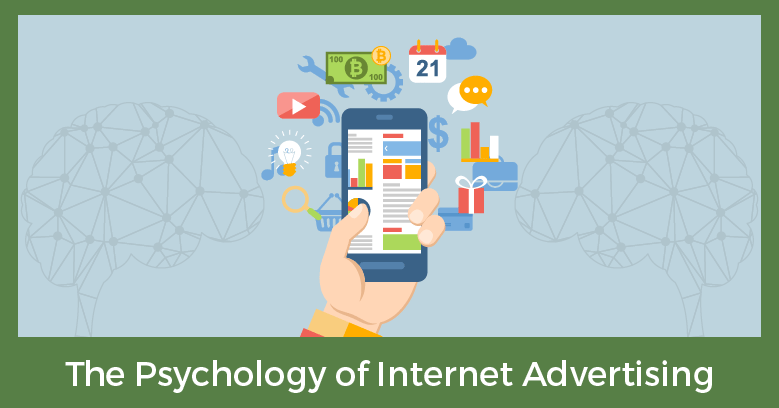
Almost there! Please complete this form and click the button below to gain instant access.


Finally, An Easy Way To Recruit - Rejection Free - Without Wasting Your Time & Money Chasing Dead Prospects & Leads...
We Respect Your Privacy

(Please Enjoy This Post From Guest Blogger Ferny Ceballos )
Have you ever felt vulnerable in a parking lot?
If you have, keep that feeling in mind; I promise it’ll make you a better marketer.
Here’s what I mean…
Just recently, I had an experience that pretty much sums up how you should think about your Internet advertising efforts.
After spending the day running errands with my girlfriend, we stopped by a grocery store.
As we parked, I noticed this woman behind me through the rear-view mirror.
She had her groceries on top of the car and she looked like she was having trouble getting the doors unlocked.
I immediately thought…
She has her keyless entry thing completely taken apart, and it looked like she was putting in a new battery.
So I decided to walk over and help her.
But when I walked over and asked, “Do you need help?” her immediate, instinctual response, based on her physical reaction to me, was…
“NO!”
But the fact of the matter is, she did indeed need help.
Sidenote: you can listen to this story right here:
And read on for the complete play-by-play and analysis…

I’m a big Mexican guy with a beard asking her if she needs help.
Besides her immediate response to me walking over to her, she knew she did need help…
…so she overcame that automatic physical response, and she finally said, “yes.”
She told me that she was locked out of her car, that her keyless entry was not working, and then she handed me the parts to it.
I took a look and I saw there’s a battery, a little circuit board, and this button that had snapped off.
I said, “Well, it looks like you have to have somebody solder it back on, so you might as well just get a new one.”
Unless she was able to get this thing to work, she couldn’t even drive her car and she was STUCK there.
I looked at it, grabbed the battery, held it in place to where the battery should be, and then I grabbed the little switch and put it in the node (connector) where it should be.
Then, when I pressed the button, it initiated the switch, and the car unlocked!
Voilà!
She was so happy because she couldn’t figure this out by herself.
Of course, my background in my “former life” was as an engineer, so this little circuit board was simple—I knew exactly how it worked without breaking a sweat.
I unlocked the car, and she was so happy and grateful, and then she walked away with a big smile on her face.

Now, that experience was pretty awesome.
It would be our good deed for the day, but it’s also a perfect metaphor for your Internet advertising.
As marketers, we seek out people with a particular problem and we help them solve that problem…
Despite the apprehensions they may have.
For example, when you put out a capture page, you might think you’re asking somebody to give you their email address on a form in exchange for some piece of information.
But that’s not really it.
What you’re actually doing on your capture page or on your website when you ask somebody for their contact information is that…
You’re offering to solve a problem for them.
Despite their apprehension about wanting to give away their personal information, their personal email address, despite that initial “I don’t want to do this” in them…
…they decide to yield, because the problem you’re helping them solve is worth the risk of potentially giving their information away to somebody they don’t know.
Just like the woman in the parking lot!
Despite her fears of seeing the big, imposing Mexican guy walking towards her, her problem was so big that she was willing to take the risk and engage me in a conversation in hopes that I could help her.

And it’s the exact same psychology when you’re selling something.
When you make an offer for a sale, you’re offering to solve a problem.
And the problem that you’re solving has to be big enough so that they’re willing to part with their money in hopes that you can help them solve that problem.
Now, do they have absolute assurance that you can help them 100% with their problem?
No.
But the likelihood of you being able to help them has to be strong enough for them to be able to trust you enough to willing to part with their money.
Now, the difference between sales and marketing is a huge.
A lot of people think that what we do with Internet advertising and marketing is sales…
And it’s really not.

In the case of the woman, I didn’t have to sell her on talking to me and I didn’t have to sell her on being helped.
I already knew what the problem was. I could tell from a distance.
She was having trouble getting into her car, so it probably had something to do with her keyless entry device, so I just approached.
I already knew what the problem was, and as soon as I asked her, aside from her apprehension of talking to a stranger, she handed over the device and immediately engaged me and was willing to let me help her.
That’s what marketing is!
You have already identified what the problem is in your target market, and you’re advertising the solution to that problem.
In sales, when you’re doing one-on-one sales or one-on-one prospecting, you’re having a conversation with people in the hopes that they’ll tell you enough about themselves so you can eventually identify a problem or a desire in their life that can connect with what you’re selling.
With marketing, you can’t do that. You can’t engage in the conversation.
And that’s where advertising comes in.
I told you about what’s happening on the capture page: you’re advertising a solution to a certain problem.
And when you’re advertising, you’re trying to find people that, in all likelihood, have a problem which your product or service can help solve.
So now let’s talk about how these concepts apply in different places that you might be advertising.

Let’s talk “pay-per-click” advertising psychology.
Google Adwords and Bing Ads are the two biggest search engine advertising platforms.
Now, keep in mind that it’s really hard—in this industry—to get your campaigns approved using AdWords, but if you’re in other markets or niches (other than home-based business), then you’re luckily able to advertise on Google Adwords without a problem.
So what happens when somebody goes on a search engine on Google or on Bing, and they tell the search engine what they’re looking for?
Most likely, they are typing their problems into the search engine…
As an advertiser, your ads are triggered to display based on the specific words the user types into the search engine—it’s keyword based.
Thus, it’s really easy on the search engines to find targeted prospects, based on the keyword terms they input into the search engine.
After all…
They are explicitly telling the search engine what problems they want solved.
All you do is “bid” on the appropriate keywords, pay a predetermined fee each time someone clicks on your ad, and you can attract people in droves.
Then, when your prospects click and land on your capture or sales page, you simply bribe them to opt-in or sell them a solution that can help them solve that problem.
Pretty straightforward, right?

Advertising on social media is a little different.
It’s a little deeper and a little more advanced than what happens on the search engines.
With social media, the psychology is more nuanced because people aren’t actively searching for solutions to a problem…

If you’re, say, in the network marketing space, and you’re trying to target other people in that space, you know their interests will likely include network marketing leaders and gurus, or they may be reading certain books on network marketing. (i.e., Rich Dad Poor Dad)
If you’re targeting people that are in sales, their interests will likely be around sales, so they probably like pages that are related to sales. (Grant Cardone, Think and Grow Rich, etc.)
Now that you’ve been able to target that audience, the messaging on your ad should be related to the common problems those groups of people usually face when dealing in that particular profession.
That’s where it’s a little more nuanced, as it’s less direct than keyword based advertising.
Also, going deeper into the psychology of social media…
People don’t necessarily like to be advertised to.
But they are interested in sharing and consuming content that’s of interest to them.

Finally, let’s discuss native advertising or content advertising.
The idea of “native” might sound confusing, but it means that you’re essentially using content that appears editorial (like an article or opinion piece) as a form of advertisement.
For example, think of one of those full or multi-page ads in magazines that looks like an article, but is actually an ad in disguise.
On the web, this usually means promoting blog posts instead of “opt-in” pages.
There are many instances when you may want to lead with a piece of content as opposed to a straight-up ad, based on my results (which you’ll see in a moment).
But either way, whichever strategy you choose to use…
Know that the psychology of advertising is always the same.
You’re simply…

If you don’t have this in your DNA yet, read this over and over and over again until it makes complete sense to you.
Then approach whatever Internet advertising efforts you’re currently engaged in with this new mindset and paradigm shift.
Know that you are actively seeking people with a particular problem or set of problems that you already have a solution for.
You’re not trying to convince anybody that they need your stuff.
Your actual prospects already need your stuff, they just may not know it yet.
Remember the discussion of native advertising, where you lead with content instead of an ad?
It might seem like it would create unnecessary “friction” into your sales process and lower your conversions.
At least, that’s certainly what I thought!
But then, almost by accident, I “boosted” one of my blog posts on Facebook with a $10 daily budget and I immediately started getting commission notifications.
…and they kept flooding my inbox, day after day!
23 days later I’d made $21,212.40.
Pretty cool, right?
Want to see how I did it?
If you’d like to see this campaign—the exact ad, blog post, and the offer—check out this 100% FREE traffic workshop put together by Tim Erway, my business partner and CEO of Elite Marketing Pro.
Honestly…
I didn’t even know what I was doing in my first foray into native advertising.
But that campaign ended up generating a total of $141,246.00 in sales from an ad spend of just $9,524.90.
Which is a whopping 1381% ROI!
Not bad for a rookie!
If you haven’t registered yet, what are you waiting for?
Just pick a time that works for you to attend Tim’s traffic workshop right here.
Enjoy!



Finally, An Easy Way To Recruit - Rejection Free - Without Wasting Your Time & Money Chasing Dead Prospects & Leads...
We Respect Your Privacy
